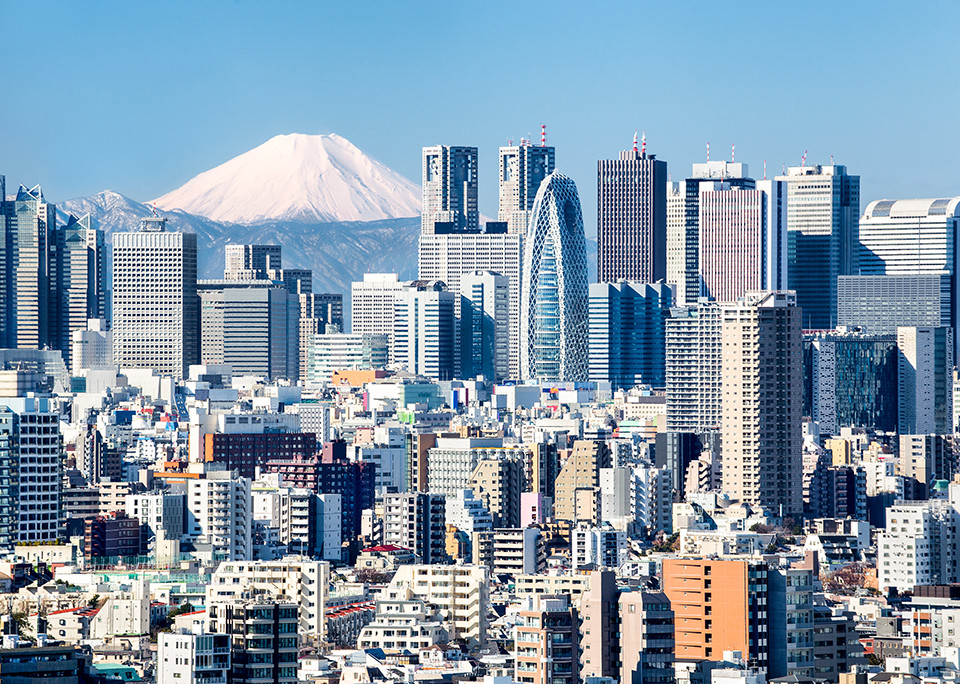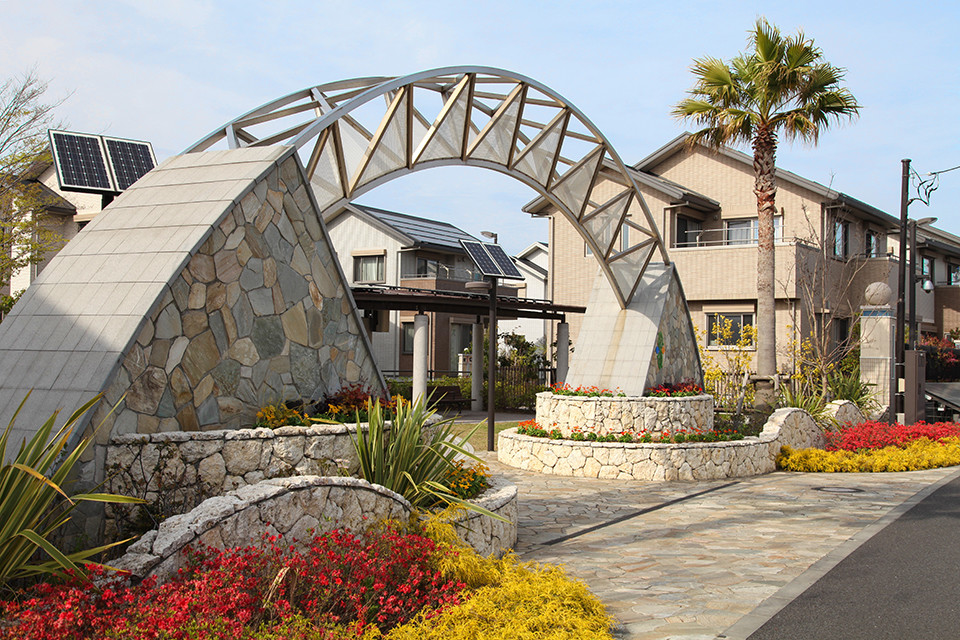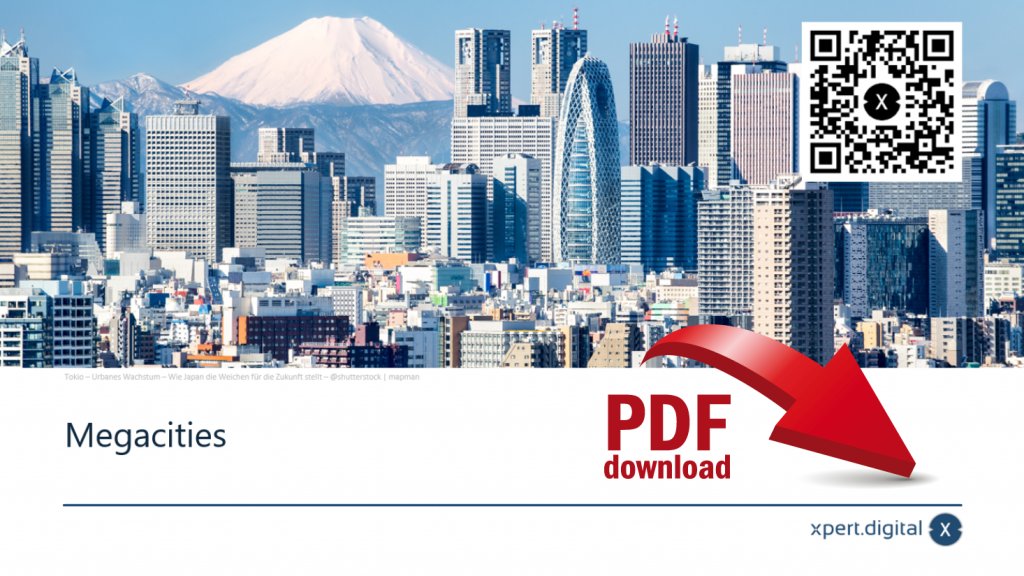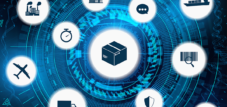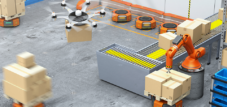Urban growth – How Japan is setting the course for the future
Language selection 📢
Published on: September 13, 2020 / update from: October 19, 2020 - Author: Konrad Wolfenstein
The trend towards growing cities continues unabated around the world. This also applies to Japan, where Tokyo, the largest of the global megacities, has emerged. Over 38 million people now live in the Tokyo metropolitan area - and the number is growing every day.
PDF Download for “Megacities - Urbanization - Numbers, Data and Facts” see below.
This development poses completely new challenges for the care and administration of the people living there. However, Japan's government and business community have long since recognized this and have begun to introduce suitable measures to deal with the unbridled growth. Automation and digitalization are among the key drivers that contribute to the solution.
Not only population experts, but also Japanese politicians and entrepreneurs know what comes with growing cities. The influx of more and more people is inextricably linked to a significantly increased consumption of energy and supplies. In addition, the development places far greater demands on the performance of the real and digital infrastructure.
The Tokyo metropolitan region, which, in addition to Japan's capital, also includes the cities of Yokohama, Saitama and Kawasaki, is by far the largest agglomeration in the world with over 38 million inhabitants. Although the region is gigantic at 13,500 km² (for comparison: Berlin 891 km²), one square kilometer in the metropolitan area is populated by an average of 2,830 people. Things are even tighter in Tokyo, where the 9.6 million inhabitants are spread over just 628 km², creating a density of 15,300 people per km².
But compared to uncontrolled megacities like Mumbai, Cairo or Lagos, those responsible in Japan's authorities and boardrooms know how to respond efficiently to this challenge. One reason for this lies in the development of the last 60 years, in which Tokyo developed from a city of millions into the megacity of our time. This gave the planners enough time to perfect their knowledge of how to deal with the growing pressures. They were always able to rely on the strong commitment to innovation and the high level of problem-solving expertise of Japan's engineers and developers.
Suitable for:
- Japan is already working on the future of tomorrow
- Smart Cities – The solution for mega-urbanization?
The efficient answer: automation and digitalization
The know-how of its workforce also fueled another factor that ensures Japan's pioneering role in technical development: the extraordinarily high level of automation that arrived in the land of the rising sun decades ago. This development is now being complemented by digitalization and the increasing spread of robots in people's everyday economic and social lives, so that the growing demands for supply and logistics can continue to be fully met.
Suitable for:
Contactless shopping and Konbinis – local decentralized hubs
An example of the high level of adaptability is contactless shopping. This has been extremely popular with consumers, and not just since the Covid-19 pandemic and the associated fear of infection. E-commerce and automated purchasing have been among the major drivers of shopping development in Japan for years.
Suitable for:
However, both pose major challenges for city logistics. Due to the rapidly increasing order volumes, the infrastructure has to cope with many times the number of deliveries from parcel and courier services.
Japan's international competitiveness is no coincidence. The country has one of the best education systems in the world. It is therefore no surprise that Japanese engineers are among the most innovative developers. The concentrated know-how available in the country is also reflected in the number of patents filed. In an international comparison, the country has occupied one of the top three places for years.
Only intelligent solutions can help to save transport routes from collapse. For this reason, intelligent delivery robots have been driving through the streets of Japanese cities for some time on behalf of trading and logistics companies such as Yamato Transport or Rakuten. The advantage of networked helpers: They are small, work automatically and bring the desired products from local hubs directly to consumers.
There are now a variety of options for contactless shopping in Tokyo and elsewhere. The solution is Konbinis, small shops that sell everyday items that can be found all over the country. At the same time, konbinis and other small stores can serve as locations for micro-fulfillment. They act as small distribution centers that offer additional services to residents in the area. In addition to contactless shopping, you can pick up or return goods ordered online.
Especially in metropolitan areas, Konbinis are increasingly operating automatically and without staff. But Japan's government is already planning ahead. Last year, representatives of the Ministry of Economic Affairs approached the five largest providers with an ambitious plan: by 2025, they should fully automate a large part of the approximately 50,000 Konbinis in the country. Logistics companies are responsible for ensuring that supplies to decentralized hubs and local businesses run smoothly.
Suitable for:
Japan's city of the future is automated and sustainable
Another starting point for optimizing the performance of cities is intelligent power grids. Japan is also one of the world's leading nations in this area. The technology relies entirely on the networking of electricity generators, storage units, distributors and consumers and serves to optimize the energy supply. By integrating powerful storage power plants, innovative battery solutions and the generation of renewable energies, Japan can ensure that even a mega-metropolis like Tokyo is supplied with sufficient energy at all times.
But the inventiveness of Japanese engineers and IT experts is far from exhausted. Japan's urban developers are already planning the future of the day after tomorrow today. Large corporations such as Panasonic and Toyota have taken the lead when it comes to designing innovative building and living concepts. This showed that Toyota can do much more than be one of the world's most successful car manufacturers. Now the industrial group is planning the city of the future with the so-called Woven City at the foot of Mount Fuji. Toyota wants to create a model city on 175 hectares that is characterized by networking, automation and sustainability. The groundbreaking ceremony for the project, which will provide homes for 2,000 people in its first expansion stage, is planned for 2021.
Some of these promising residential projects have already been implemented in Japan; for example in a Panasonic Group project. With the Fujisawa Sustainable Smart Town, the company inaugurated a city for 3,000 residents just outside Tokyo in 2014 after just two years of construction.
The focus was on sustainability because the planners want the project to function in an environmentally friendly manner for the next 100 years. Together with other partners, Panasonic invested in particular in environmentally friendly mobility and energy use for all residents. So that Panasonic can benefit from the experience of the city project in the long term and in order to advance new technologies, development and research laboratories were integrated, which further increases the innovative strength of the companies involved.
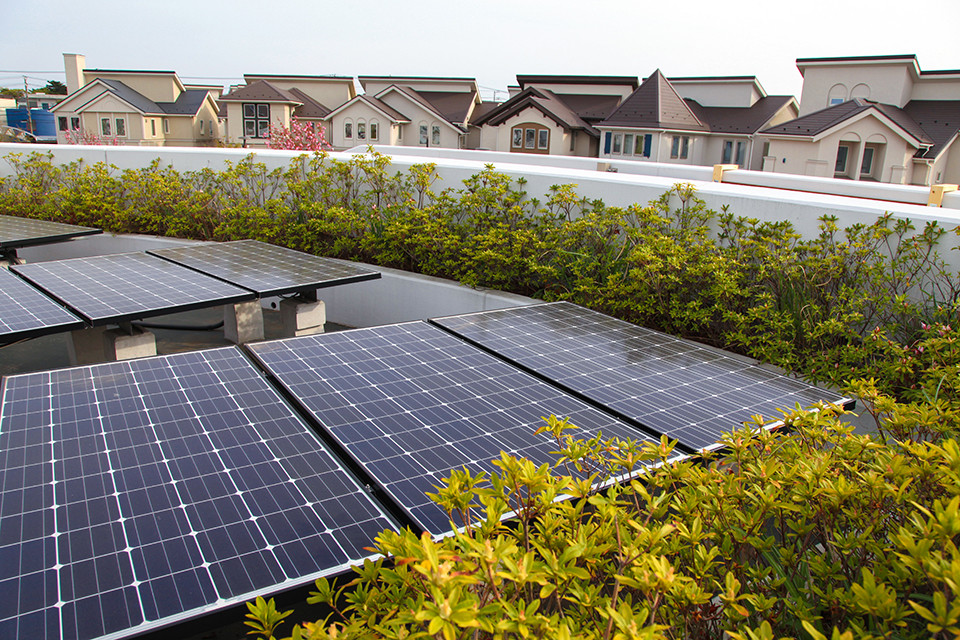
Solar panels on the roof of the buildings of Fujisawa Sustainable Smart Town / Japan – @shutterstock | MarinaSkyf
A look at Japan shows how the social, economic and logistical challenges of the future can be overcome. The focus on automation and digitalization as well as the consistent use of future technologies form the basis for an innovative approach that can also ensure an increase in quality of life and economic strength in both urban and rural areas.
Megacities – urbanization – numbers, data and facts
German version – To see the PDF, please click on the image below.
German Version – To view the PDF, please click on the image below.
► Contact me or discuss with me on LinkedIn
What will be crucial for the future will be how we secure the infrastructure of our key industries!
Three areas are of particular importance here:
- Digital Intelligence (Digital Transformation, Internet Access, Industry 4.0 and Internet of Things)
- Autonomous power supply (CO2 neutrality, planning security, safety for the environment)
- Intralogistics/logistics (full automation, mobility of goods and people)
Xpert.Digital delivers you here from the Smart AUDA series
- Autonomization of energy supply
- urbanization
- Digital transformation
- Automation of processes
always new information that is updated regularly.



